Concrete plans: inside KAAN Architecten’s Rotterdam offices

Due to an expanding studio, Rotterdam-based KAAN Architecten has relocated to new offices in the former De Nederlandsche Bank HQ, offering an opportunity to design a bespoke environment to suit its working needs and reflect its architectural philosophy.
The robust brick facade of the building, which stands out beside taller structures along the Maas River near the Erasmus Bridge, was originally designed by Professor Henri Timo Zwiers between 1950–1955 and has an entrance hall decorated with mosaics by Dutch artist Louis van Roode.
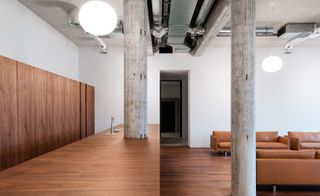
The simple structure of the existing building allowed KAAN Architecten to design open-plan spaces with continuous lines, creating synchronicity across the whole space
KAAN Architecten partner Dikkie Scipio wanted to create a space which would encourage sharing of knowledge and also bring back to life the existing architectural identity of the building.
Inside, the industrial-style concrete space has a wide rectangular plan of 1,400 sq m with high ceilings and large windows which cast light into the core of the building. Concrete columns delineate the space – as do vast connecting corridors between meeting rooms, informal spaces and an open-plan working area for the architects at the heart of the design.
The new building has an architectural heritage of its own, which the team looked to adapt for over 80 work stations and refine with new materials, while preserving its character; dark walnut surfaces and floors have been used to create a velveteen contrast to roughly exposed concrete ceilings and columns.
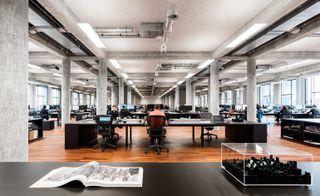
An open plan workspace sits at the centre of the design

Dark walnut has been used to smooth and refine the interiors

Informal spaces featuring sofas have been designed between meeting rooms and the open-plan office
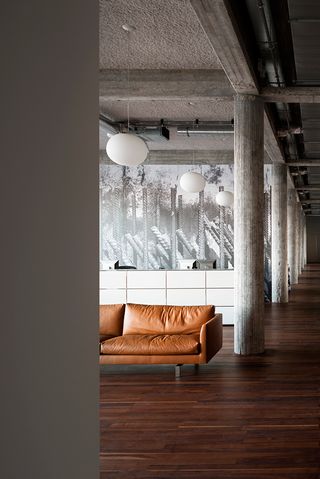
Long corridors are framed by concrete columns, giving the architecture a monumental effect

The entrance hall was decorated with mosaics by Dutch artist Louis van Roode
INFORMATION
For more information, visit the KAAN Architecten website
Wallpaper* Newsletter
Receive our daily digest of inspiration, escapism and design stories from around the world direct to your inbox
Harriet Thorpe is a writer, journalist and editor covering architecture, design and culture, with particular interest in sustainability, 20th-century architecture and community. After studying History of Art at the School of Oriental and African Studies (SOAS) and Journalism at City University in London, she developed her interest in architecture working at Wallpaper* magazine and today contributes to Wallpaper*, The World of Interiors and Icon magazine, amongst other titles. She is author of The Sustainable City (2022, Hoxton Mini Press), a book about sustainable architecture in London, and the Modern Cambridge Map (2023, Blue Crow Media), a map of 20th-century architecture in Cambridge, the city where she grew up.
-
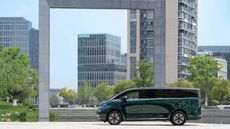 LEVC’s L380 is a truly magnificent minivan
LEVC’s L380 is a truly magnificent minivanThe London Electric Vehicle Company’s L380, is a magnificent minivan designed for upscale long-distance travel, as the maker of the London Taxi branches out into all-purpose EVs
By Jonathan Bell Published
-
 Enjoy ocean and jungle bliss at Bespoke Tulum’s residences in Mexico
Enjoy ocean and jungle bliss at Bespoke Tulum’s residences in MexicoBespoke Tulum is an exclusive hospitality complex designed by Muro Rojo Arquitectura on Mexico’s Caribbean coastline
By Sofia de la Cruz Published
-
 In Van Cleef & Arpels’ high jewellery, the archival meets the au courant
In Van Cleef & Arpels’ high jewellery, the archival meets the au courantVan Cleef & Arpels pays tribute to its rich heritage with a captivating high jewellery collection
By Hannah Silver Published
-
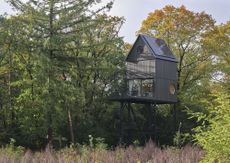 A nest house in the Netherlands immerses residents in nature
A nest house in the Netherlands immerses residents in natureBuitenverblijf Nest house by i29 offers a bird-inspired forest folly for romantic woodland escapes in the Netherlands
By Ellie Stathaki Published
-
 The House Under the Ground is a Dutch home surrounded in wildflowers and green meadow
The House Under the Ground is a Dutch home surrounded in wildflowers and green meadowThe House Under the Ground by WillemsenU is a unique Dutch house blending in its green field
By Harriet Thorpe Published
-
 Open Park Villa is a minimalist Dutch home embracing its parkland setting
Open Park Villa is a minimalist Dutch home embracing its parkland settingOpen Park Villa by i29 architects offers a green residential oasis in a formerly military-owned plot turned parkland
By Ellie Stathaki Published
-
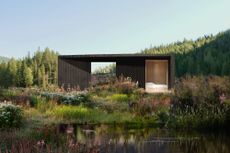 Câpsula, a series of tiny homes, champions 'living large with less'
Câpsula, a series of tiny homes, champions 'living large with less'Câpsula, initiated by architecture studio i29, brings together tiny homes, wellness and a design-led approach at Dutch Design Week 2023
By Ellie Stathaki Published
-
 Kunlé Adeyemi’s water cities and visions of future living at Het Nieuwe Instituut
Kunlé Adeyemi’s water cities and visions of future living at Het Nieuwe Instituut‘Water Cities Rotterdam. By Kunlé Adeyemi’ opens at Het Nieuwe Instituut in The Netherlands, offering visions of future living
By Ellie Stathaki Published
-
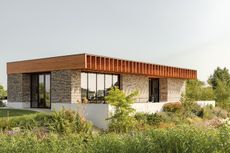 Rotterdam house is a sustainable home with a defining timber roof
Rotterdam house is a sustainable home with a defining timber roofTerphouse is a green Rotterdam house by Studio AAAN, featuring a distinctive low-slung, timber roof
By Ellie Stathaki Published
-
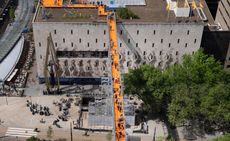 View from the top: Rotterdam Rooftop Walk rises 30m above the city
View from the top: Rotterdam Rooftop Walk rises 30m above the cityThe temporary installation, a collaboration with architects MVRDV, offers visitors a new perspective of Rotterdam
By Hannah Silver Last updated
-
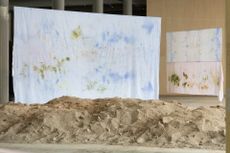 An OMA/AMO show at Het Hem explores our balance with nature
An OMA/AMO show at Het Hem explores our balance with natureWe tour Het Hem's latest exhibition, ‘Chapter 5IVE’, a collaboration with OMA's Rem Koolhaas and Samir Bantal, director of AMO
By Yoko Choy Last updated